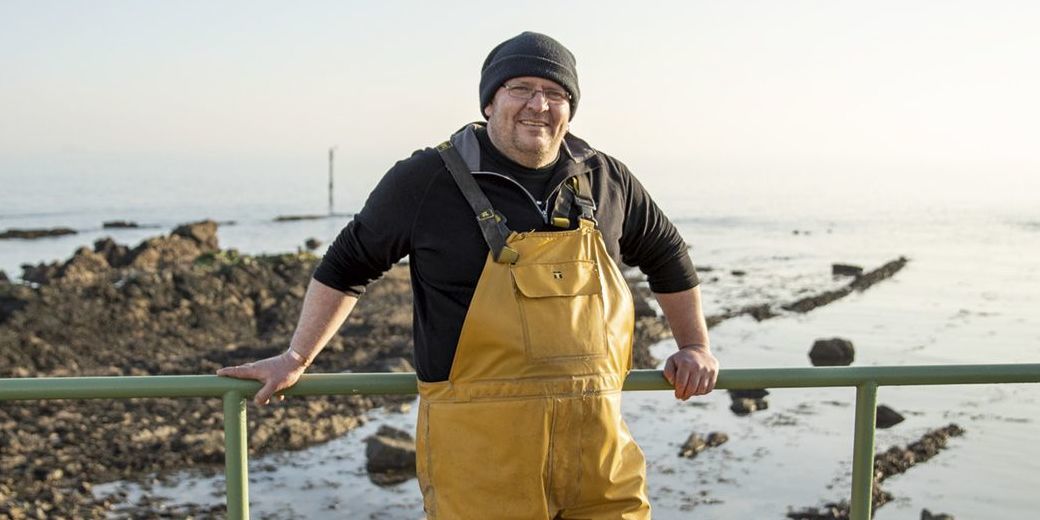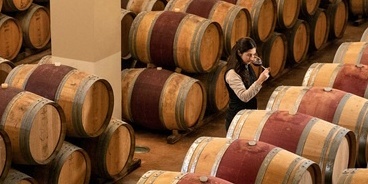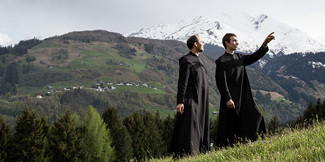THE ELEPHANT WHISPERER
Somchat Changkarn and his charges can communicate without words – this mahout can tell how the animals are feeling by their body language. He spends up to 12 hours per day with the pachyderms at the Thai Elephant Conservation Center.

A life for the gentle giants of Thailand
There is no holding back when the elephants see water! A few moments ago, the troop was taking a leisurely trot toward the lake in single file and then, suddenly, they crash down the bank and throw themselves into the cool water. “Bath time is the real high point of the day for our charges,” explains Somchat Changkarn. The Thai mahout has been in the job at the Thai Elephant Conservation Center (TECC) in Lampang for 17 years. To make things easier for visitors to the Center, the 40-year-old goes by Dang for short. He has two children and is now the chief mahout, caring for 111 elephants, along with the rest of his team. The Center is around 50 miles southeast of the provincial capital, Chiang Mai, in the north of Thailand. The Center covers a large, wild area full of thick forests and lush, green hills; a breeding station and elephant hospital; a visitor center and a mahout school.
Mahouts are trained elephant herders, able to direct these gray giants with simple commands, gestures and touches. “Nobody knows elephants like an experienced mahout,” says Dang. “We can read their body language precisely and it tells us how that animal is feeling at that moment and what it needs, and when it is time for a refreshing bath in the lake, they tell us that, too. They get restless and that shows us that they want to go down to the water.”


Splashing in the lake is skincare
Baths are not just about the welcome cooling effect for elephants. In fact, the skincare implications are far more important. “That is why bathing in the lake is a part of their daily routine,” explains Dang. This is where the elephants wash off the muddy crust they have built up over several “sand baths”. They use the sand to protect themselves from the sun, from overheating and from irritating insects.
Thailand – the home of the elephants
The day-to-day lives of humans and elephants are more closely interwoven in Thailand than anywhere else on earth. Up until 1917, the national flag even featured a white elephant to symbolize the absolute monarchy. The birth of a white elephant (often albino or “normal” elephants with paler flecks of pigment on their ears or foreheads) was regarded as a good omen for the ruler of the time. Even today, white calves automatically pass into the ownership of the Thai royal family and, according to legend, one of Buddha’s incarnations was as a white elephant. Many Thais believe that the country’s borders depict the head of an elephant. The “forehead” forms the border with neighboring Myanmar in the north and the “trunk” stretches to the Andaman Sea in the west, plunging into the Gulf of Thailand in the east.
Working animals with no work
Unfortunately, the history of these gentle giants also includes their use in war over many years and as “carthorses” to pull tree trunks weighing several tons through the dense Thai forests. In 1989, logging was made illegal in Thailand, meaning many elephants became surplus to requirements. From that point on, elephants had to earn their keep as tourist attractions and by transporting holidaymakers through the jungle on trekking tours – often living in poor conditions. Thankfully, mindsets have been changing on this for a long time now: the Thai government has declared vast stretches of land to be conservation areas, is encouraging green tourism and is proactively raising awareness. This is where the vast wealth of expertise possessed by mahouts really comes into its own. At the National Elephant Institute (NEI), which is part of the Thai Elephant Conservation Center in Lampang, mahouts together with Taweepoke Angkawanish, Head of the Elephant Conservation Program, care for sick or orphaned elephants, as well as elephants who were given up by their former owners. The in-house hospital treats elephants for free and is funded by the Thai government and the income from ecotourism on the Center’s land. Throughout their treatment, each elephant receives care from their own assigned mahout. “The recovery period often lasts two or three months, and during that time we try to educate the mahouts as much as possible so as to avoid future health problems for the elephants,” explains Taweepoke Angkawanish. “We show them how to take proper care of the elephants.”


Hygiene is a crucial factor in keeping domestic elephants.
“Elephants often get sick because they are kept in dirty stables,” explains Dang. “The animals have to eat off the dirty floor and catch illnesses that way. Many elephants also do not receive sufficient care.” The animals need to keep clean in order to survive In Lampang, the staff use a hot water pressure washer every day to clean the elephant stables and open spaces of stubborn dirt. The small elephants also get a gentle shower using the garden hose. “Many elephant owners are not aware of how important it is to clean the animals’ environment every day,” Dang points out.
In Lampang, they are reaping the benefits of being consistent with this policy. Each year sees up to two elephant births, meaning the Center is making a significant contribution to conserving the species. “Thailand without elephants? I just can’t imagine it,” says Dang, pensively. “There is no more beautiful animal for me than an elephant. They are astoundingly clever and highly sociable. They look after one another and every elephant has its own unique personality. That makes them much more similar to us humans than many people realize.”

FIVE FACTS ABOUT THAILAND
• The Kingdom of Thailand covers an area of 198,115 mi². The capital is Bangkok.
• The Thais adore their king. You will find pictures of him everywhere.
• This Southeast Asian country borders Myanmar, Laos, Cambodia and Malaysia.
• The national anthem is played every day on Thai television, radio channels and in public buildings at 8 am and 6 pm. When they hear the anthem, people stand or stop for a moment – before going back to normal life.
• The principle crop in the country is rice.
You may also be interested in:

A Life for the Big Catch
Each day fishermen sail out from the harbor in the small Scottish village of Pittenweem on the Firth of Forth estuary on the North Sea coast and catch lobsters and brown crabs. The work is hard, but nobody here would change it for the world.

Queen of the Wine Cellar
Since the Middle Ages, vines for premium red wines have been ripening on the slopes of the La Braccesca vineyard under the blazing Italian sun, which was in ample supply last summer. Today, the grapes mature under the watchful eye of oenologist Fiamma Cecchieri, who always has plenty to do at the winery.

Reaching for the Sky
Many people aim to reach for the sky in life, but only few follow the path being trodden by Murezi Casanova. At the Benedictine Monastery in Disentis, Switzerland, the novice and trained landscape gardener takes care of the greenery and monastery garden, and will soon add the salvation of his fellow human beings to his list of duties.









